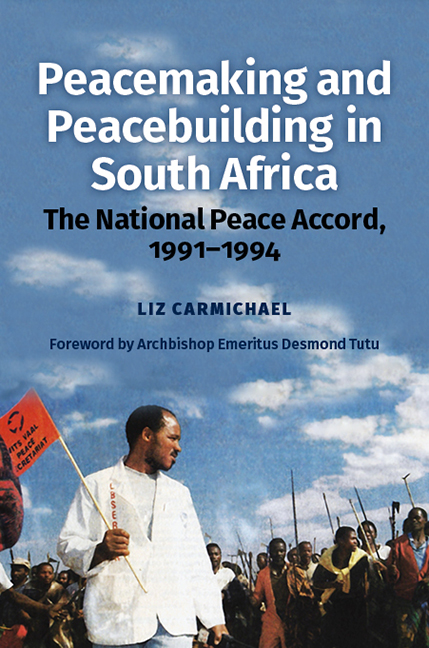Book contents
- Frontmatter
- Dedication
- Contents
- List of Illustrations
- List of Abbreviations
- Glossary
- Acknowledgements
- Note on Nomenclature
- Transition Timeline
- Foreword
- Introduction
- Part One Peacemaking, Peacebuilding, and the South African Conflict
- Part Two Peacemaking
- Part Three Peacebuilding
- Conclusion: Impact and Unfinished Business
- Bibliography
- Index
17 - Building Peace in the Regions II: The Cape, OFS, and Transvaal
Published online by Cambridge University Press: 08 October 2022
- Frontmatter
- Dedication
- Contents
- List of Illustrations
- List of Abbreviations
- Glossary
- Acknowledgements
- Note on Nomenclature
- Transition Timeline
- Foreword
- Introduction
- Part One Peacemaking, Peacebuilding, and the South African Conflict
- Part Two Peacemaking
- Part Three Peacebuilding
- Conclusion: Impact and Unfinished Business
- Bibliography
- Index
Summary
Western Cape
The Western Cape stretches northwards from Cape Town to the Namibian border, and far eastwards along Africa's southern coast. It is home to the majority of the Coloured population, who were battered by apartheid. From the 1970s onwards Xhosa work-seekers migrated from the eastern Cape to create informal settlements near Cape Town. Being illegal, these were constantly at war with the authorities. The 1980s saw intense conflict between police, young ‘comrades’, warlords and people; and the start of complex taxi wars. Small towns throughout this region were affected by boycotts, protests, and land issues around squatter settlements. The IFP was not a significant player, but the structures saw plenty of action in this region. Its unique contribution was its ‘Media Peace Centre’, airing peace programmes on TV and radio and experimenting with ‘video dialogues’. Susan Collin Marks, an RPC member, has described this region's work in vivid detail (Marks, 2000).
A ‘Cape Town Peace Committee’ already existed, co-chaired by the Mayor and Archbishop Tutu. The NPS consulted with it on 20 November 1991 (Tutu was away on sabbatical). Its purpose was specifically to mediate the taxi wars, work that it quickly handed to the RDRC. After a wider meeting on 14 January the RDRC was launched at a well-attended plenary in Salt River Town Hall on Sunday 16 February (Marks, 2000 p.23).
Graham Higgo, retired Chairman of Reckitt & Coleman, a Rotarian and founder member of NIR, was elected Chair, and the theologian Prof. Jaap Durand, Minister in the DRC in Africa, anti-apartheid Vice-rector of UWC, Vice-chair. In August when Higgo became NPS Marketing Committee Chair they exchanged roles, Durand becoming Chair; and in 1994 businessman Ernest Wilson became Co-vice-chair. The CBM provided an office in the suburb of Bellville and seconded its own Regional Director, Retief Olivier, part-time as the region's Director. Olivier eventually became full-time Regional Manager.
The RDRC Executive deputed a sub-committee to form LDRCs. It hit a wall with its first attempt, a combined LDRC for the formal black township of Nyanga and its neighbour, the lawless shacklord-dominated informal settlement of Crossroads. The Executive heard on 19 March that just two out of thirty-five invitees had turned up to the exploratory meeting.
- Type
- Chapter
- Information
- Peacemaking and Peacebuilding in South AfricaThe National Peace Accord, 1991-1994, pp. 379 - 401Publisher: Boydell & BrewerPrint publication year: 2022

